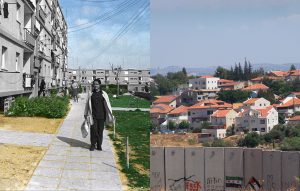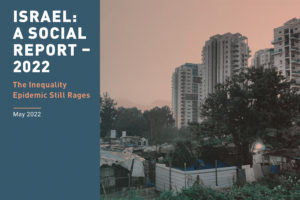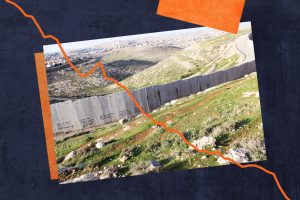The report offers a fresh look at the implications of the Israeli-Palestinian conflict for Israeli society and confronts two different national agendas, and two Israeli settlement projects: The Development Towns and The Settlements in the Occupied Territories
The Israeli-Palestinian conflict affects not only international and domestic politics but also Israel’s society and economy.
To illustrate we will compare two Israeli settlement projects: the development towns, established before the Six Day War, and the settlements in the occupied territories, the first of which was set up immediately after that war and became Israel’s major national project after 1977.
From the very start, the promise of development was problematic: the towns were located far from the center of the country, and for years they suffered from lack of economic infrastructure and high unemployment. Instead of serving as urban service centers for their rural surroundings, they lost out in competition with the veteran Kibbutzim and Moshavim.
While the center of the country entered the age of hi-tech, the development towns remained dependent on low tech. The promise inherent in the concept “development” was then superseded by resignation over being stuck in locations far from the center. The mission of development was truncated long before it was realized.
Just as development was disappearing from the development towns and they were becoming the periphery, a new national project was developing in the center of the country: The Settlements.
The first settlements were established immediately after the 1967 war. Twenty years later there were still only about 50,000 settlers. Today the settlers number 600,000, including Israeli residents of the Jerusalem quarters annexed after the war; without them the settlers number 400,000.
In contrast to the development towns, the settlements were not in need of development, as they were located near large cities in the center of the country. Many of the settlements serve as “bedroom communities” for government officials, military personnel, teachers, nurses, social workers and the like.
The amount of money channeled to the development towns was never very great. Infrastructures were poor, as were the public services. In the 1950s and 1960s, the state itself did not have much in its kitty.
The amount of money channeled to the settlements is much greater, among others because when they were set up, the resources of the state were much greater. The settlements are the recipients of generous government budgets: the state assists the settlers, mainly those in “ideological” settlements, with home purchase, by means of convenient mortgages, financing for half of the development costs of construction, exemption from tenders on the land and a discount of about 70% on the value of the land itself. In addition, the government subsidizes education at a higher rate than it does for localities inside the Green Line.
Now we can add another significant difference, which in many senses includes all the rest: the increasing political power of the ideological settlers, as compared with the declining political power of the development towns.
The development towns experienced a political high point in the 1980s and 1990s, when some of their mayors became political celebrities and were elected to the Knesset and appointed to senior positions in government. Since then, they have not been able to replicate that success.
In contrast, the political camp that supports the settlements and their annexation is increasing its power and becoming central in the determination of Israel’s political agenda. This is happening through the growth of political parties belonging to the national religious camp, morphing into “the settler right.” Although these parties represent different social groups holding different positions on civilian matters, the main issue that unites them is preservation of the settlements and advancement of the policy of annexation.
Development towns – and the entire Israeli periphery – never succeeded in attaining such a position, one that would enable it to put development back on the Israeli agenda. Annexation trumps development.





